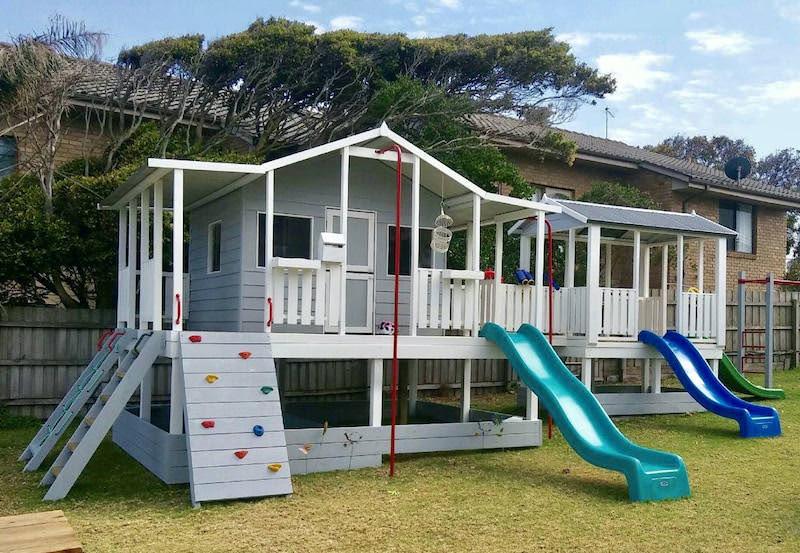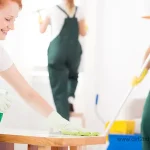For generations, cubby houses have been a treasured feature in backyards across the world, offering children their independence, adventure, and creativity. These playful hideaways, whether simple or elaborate, provide a space for children to dream, imagine, and explore in the safety of their homes, while keeping the area easy to maintain with regular cleaning.
The kids’ cubby house has evolved reflecting broader changes in culture, materials, and design. From rudimentary shelters made of sticks to sophisticated miniature homes with all the trappings of modern life, The humble cubby house has become more than a play structure, and with Eco-Friendly Tips for Cleaning Kids’ Toys, it can remain a safe and clean environment for children.
- Early Origins of Cubby Houses
The concept of the cubby house has its roots in the universal human instinct to build shelters, which can be kept looking fresh and clean with regular pressure cleaning. Children have always been drawn to creating small hideaways, mirroring the adult world, but scaled down to their size. Historically, these makeshift cubby houses were often little more than a pile of sticks and leaves or a simple lean-to constructed from available materials. These early versions were rough, temporary, and built purely for imaginative play.
In many cultures, cubby houses were inspired by traditional building styles. In Australia, where the term “cubby house” originated, Indigenous children made shelters called miamias, temporary structures made from branches and bark.
- The Rise of the DIY Cubby House
As families became more settled and backyard space became more accessible, the cubby house evolved into something permanent. By the mid-20th century, it wasn’t uncommon for parents to build DIY cubby houses for their kids. Wooden frames covered with plywood or fabric serve as an inexpensive way to create a play space in the garden.
The 1950s and 60s saw the rise of mass-produced materials, which made it easier for families to construct durable cubby houses. Cheap cubby house designs became popular, allowing parents to provide their children with a dedicated play area without breaking the bank. The focus was still on creativity and exploration, with many cubby houses featuring trap doors, secret windows, and furnishings made from household scraps.
This era also saw the development of treehouses—another form of cubby house. Built into the branches of a large tree, these play structures offered an additional element of adventure and risk, cherished by older children.
- The Modern Era: Customisation and Innovation
In the 21st century, cubby houses have transformed. Today, they are sophisticated structures designed to mirror the modern world, complete with mini kitchens, verandahs, and electricity. Many modern kids’ cubby houses, like treated timber, are made from high-quality materials and are built to withstand the elements. Durability and Design in Modern Cubby Houses
Thanks to advances in design and construction, today’s cubby houses are not only visually stunning but also incredibly robust. Australian hardwood trims, treated pine frameworks, and weather-resistant roofing materials—such as Colorbond steel—ensure these playhouses can handle years of rough-and-tumble play, harsh sun, and even wild weather. Families now seek cubby houses that offer both longevity and low maintenance, making these structures a lasting investment that can serve generations of children.
Whether custom-built or purchased as ready-made kits, modern cubby houses reflect a blend of imaginative play and practical craftsmanship, raising the bar for backyard play spaces everywhere.These structures can be purchased ready-made or custom-designed to suit a family’s specific needs and tastes.
Cheap cubby houses continue to remain a popular choice for families on a budget. Many of these options come in flat-pack kits, making them easy to assemble at home. Despite their affordability, these cubbies include fun features like slides, climbing walls, and sandpits, ensuring children have plenty of opportunities for active, outdoor play. The rise of eco-friendly materials has also influenced cubby house design, with many parents opting for sustainable wood or recycled materials to create a greener play environment.
Endless Options for Play and Personalisation
Modern cubby houses offer a remarkable level of customisation. In addition to the basics, families can select from a variety of attachments and accessories to enhance the play experience and support children’s gross motor development. Popular additions include:
- Slides for thrilling descents
- Rock walls and scramble nets to encourage climbing and coordination
- Steps and fireman’s poles for adventurous entry and exit
- Combo bridges for connecting multiple play zones
- Balustrades for safety and style
For imaginative play, cubby houses can also feature:
- Steering wheels and telescopes for budding explorers
- Letterboxes for sending “mail”
- Shop counters and servery windows to inspire make-believe businesses
- Extra windows and flower boxes for a touch of homey charm
- Steel ‘D’ handles to assist little hands as they climb
In contrast to earlier generations, where cubby houses were limited by the builder’s imagination and available materials, modern cubbies can be highly personalised. Parents and children now have various options to choose, whether they want a pirate ship, a fairy-tale castle, or a tiny replica of their home. These customised cubby houses can include multi-level designs, integrated playground equipment, and decorative elements like flower boxes and weather vanes.
Endless Possibilities for Customisation
Today’s cubby houses offer a remarkable level of flexibility. With a range of styles, elevations, and creative features, families can tailor a cubby to suit their backyard and their children’s interests. Some cubby houses come in up to a dozen different styles, with options to elevate the structure anywhere from ground level to heights of 450mm, 900mm, 1200mm, or even 1500mm—giving your little ones a platform for adventure, whatever their age or stage.
Creative Add-ons and Play Features
Modern cubbies are far from static. Attachments like slides, climbing walls, scramble nets, and fireman’s poles transform a simple playhouse into a miniature playground. Accessories such as telescopes, shop counters, letterboxes, combo bridges, and extra windows encourage imaginative play and social interaction. For budding gardeners, flower boxes and servery windows add a charming touch, while sturdy steel handles and balustrades keep things safe for energetic play.
Personal Touches to Finish the Look
A cubby house should be as unique as its owner. Today, families can choose to leave the timber natural, stain it for a rustic look, or paint the cubby in vibrant, UV-protected colours that reflect their child’s personality. Whether you prefer earthy tones or a paintbox-bright finish, these choices mean every cubby house can truly feel like a one-of-a-kind retreat.
- Personalising Your Cubby House: Finishing Touches
Once the structure is up, it’s time to make your cubby house truly your own. The finishing options for the exterior are almost as varied as the children who play in them. Some families embrace the natural grain of timber, leaving the wood untreated for a rustic, organic feel that blends seamlessly into the garden. Others opt for a clear, water-based stain to highlight the wood’s texture while adding weather protection.
Of course, painting is a perennial favourite. Bright exterior colours—from cheerful reds and blues to pastel pinks or even bold geometric patterns—can transform a simple cubby house into a unique backyard landmark. Just remember to choose a durable, UV-treated exterior paint to help the colours withstand sun and rain. Whether you prefer the rugged look of natural timber, the warmth of timber stains, or the playful appeal of colourful paints, the finishing choice allows your family’s personality to shine through and ensures your cubby house stays vibrant and welcoming for years to come.
- Cubby Houses in the Digital Age
The influence of technology is also shaping the evolution of the cubby house. While traditional play is highly valued, some cubby houses now include modern amenities like Wi-Fi, solar-powered lights, or small televisions, creating a hybrid space that blends the virtual and physical worlds.
- Benefits of Cubby Houses for Children
Beyond their entertainment value, cubby houses also offer several developmental benefits for children. These play spaces encourage kids to engage in imaginative play, a crucial aspect of cognitive development. Whether they’re pretending to be explorers, chefs, or superheroes, cubby houses allow children to role-play, helping them develop problem-solving skills, language, and social abilities.
Cubby houses promote physical activity when combined with playground features like swings, slides, or climbing walls. These outdoor play structures can help children stay active, improving their strength, coordination, and overall fitness. In a world where screen time is increasing, cubby houses offer a welcome reprieve, encouraging kids to engage in outdoor play and connect with nature.
- Conclusion
Whether it’s through incorporating new technologies, sustainable design, or providing a place for children to escape into their imagination, kids’ cubby houses remain a beloved part of childhood. From the shelters of the past to the complex play structures of today, cubby houses will continue to be a space where children can create, explore, and dream.







